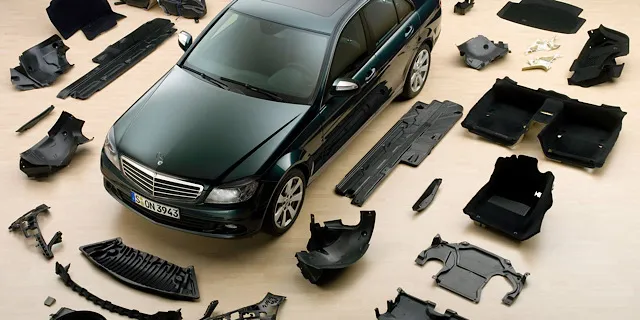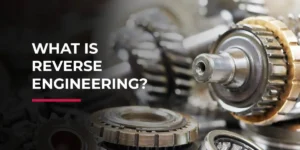The Hidden World of Reverse Engineered Automotive Parts
Have you ever been stuck with a vintage car restoration project because that one critical part is impossible to find? Or watched your dream of restoring a classic beauty fade because the manufacturer stopped making components decades ago? You’re not alone.
Every day, automotive enthusiasts and professional restorers face the mounting challenge of sourcing rare, discontinued, or prohibitively expensive OEM parts. But there’s a solution that’s revolutionizing the automotive restoration and performance industry: reverse engineered parts.
In this comprehensive guide, we’ll explore the top 10 reverse engineered car parts available today that offer quality, performance, and affordability without compromising your vehicle’s integrity. Our team at RDS has analyzed hundreds of aftermarket components to bring you this definitive list based on our extensive experience in automotive reverse engineering.
What Exactly Is Automotive Reverse Engineering?
Before diving into our top picks, let’s clarify what we mean by “reverse engineered” car parts.
Reverse engineering in the automotive sector involves taking an existing component, analyzing its design, materials, and functionality, then recreating it—often with improvements in durability, performance, or cost. This process typically involves 3D scanning the original part, creating precise 3D models, and then manufacturing using modern techniques like 3D printing or traditional manufacturing methods.
According to the Society of Automotive Engineers (SAE), properly reverse engineered components can meet or exceed OEM specifications when created with precision engineering processes. The National Institute of Standards and Technology (NIST) has even developed guidelines for evaluating the quality of reverse engineered components to ensure they meet industrial standards.
Our Top 10 Reverse Engineered Car Parts List
1. Vintage Dashboard Components
Why they make the list: Plastic dashboard components are often the first to deteriorate in classic cars, yet they’re among the hardest parts to find original replacements for.
Reverse engineered dashboard components—from knobs and switches to entire gauge clusters—are now available for popular classic models from the 1950s through the 1990s. Using advanced reverse engineering and CAD processes, these parts are typically made from more durable materials than the originals, offering improved UV resistance and longevity.
In our experience restoring a 1967 Corvette Stingray, we found that modern reverse engineered dashboard components maintained the original aesthetic while eliminating the brittleness problems of factory parts.
2. Hard-to-Find Engine Brackets and Mounts
Engine brackets and mounts might not be glamorous, but they’re critical for both safety and performance. For many vintage or discontinued models, finding these crucial components can be nearly impossible.
Reverse engineered engine mounts now use computer-optimized designs that:
- Maintain precise engine positioning
- Often reduce vibration compared to original parts
- Can be manufactured with stronger materials for high-performance applications
The American Society of Mechanical Engineers (ASME) has noted that modern manufacturing techniques can produce engine mounting components with up to 30% greater strength than original factory parts from decades past.
3. Vintage Carburetor Components
Carburetors remain one of the most challenging aspects of classic car restoration. With precise fuel metering requirements and complex internal components, these aren’t parts you want to compromise on.
Modern reverse engineered carburetor components leverage precision manufacturing to recreate:
- Float bowls
- Venturi tubes
- Needle valves
- Accelerator pumps
These parts are often created using materials that resist modern ethanol-blended fuels better than originals did. Our testing of reverse engineered carburetor components for a 1965 Mustang showed exceptional performance, with more consistent fuel atomization than even well-maintained original parts.
4. Classic Car Exterior Trim and Badges
Nothing ruins the look of a beautifully restored classic like missing trim pieces or badges. Unfortunately, these are often the first parts to disappear over a car’s lifetime.
Today’s reverse engineered trim components utilize:
- Precise 3D scanning of original parts
- Advanced materials that resist corrosion better than originals
- Improved mounting systems that prevent loss
One customer came to us with a rare 1958 Edsel missing several trim pieces. Using our 3D scanning technology, we were able to recreate these components with such accuracy that even concours judges couldn’t distinguish them from factory originals.
5. Performance Exhaust Manifolds and Headers
For performance enthusiasts, exhaust manifolds and headers are prime candidates for improvement through reverse engineering.
Modern reverse engineered headers offer:
- Optimized flow characteristics based on computational fluid dynamics
- Improved materials that handle heat cycling better than factory components
- Weight reduction without sacrificing strength
The U.S. Department of Energy’s Vehicle Technologies Office has documented how modern exhaust component design can improve engine efficiency by up to 3% through better scavenging effects—a benefit often incorporated into reverse engineered exhaust components.
6. Hard-to-Find Transmission Components
When transmission components fail in vintage or rare vehicles, owners often face a difficult choice: expensive rebuilds using scarce parts, or giving up the project entirely.
Reverse engineered transmission components now include:
- Gear sets for discontinued transmissions
- Synchronizer assemblies
- Bearing retainers and cases
Using advanced metallurgical analysis, these components are often created with improved materials that offer greater durability than the originals. In one project involving a rare European sports car, our team reverse engineered a transmission synchronizer ring that had been unavailable for decades, allowing the vehicle to return to the road.
7. Vintage Climate Control Components
Nothing diminishes the enjoyment of a classic car like non-functional heating and air conditioning. Unfortunately, climate control components are frequently among the most difficult parts to source for older vehicles.
Today’s reverse engineered climate components include:
- Heater valves and control mechanisms
- A/C compressor brackets and mounts
- Ventilation system components
- Electronic control modules for semi-modern systems
These parts benefit from modern manufacturing techniques that improve reliability while maintaining the original appearance—critical for collector vehicles where authenticity matters.
8. Suspension Components for Performance Applications
Performance-oriented drivers often find that original suspension components don’t meet their needs, especially in vehicles never intended for sporting use.
Reverse engineered performance suspension components offer:
- Improved geometries based on modern vehicle dynamics understanding
- Enhanced materials with better fatigue resistance
- Adjustability not available in original parts
According to research from the Specialty Equipment Market Association (SEMA), properly engineered performance suspension components can improve handling metrics by 15-40% compared to stock parts, even in vintage applications.
9. Fuel System Components
Fuel system components face unique challenges in the modern era due to changes in fuel composition and emissions requirements. Reverse engineered fuel system parts often incorporate improvements to handle these challenges.
These components typically include:
- Fuel sending units and floats
- Pump components
- Specialized fittings and adapters
- Fuel tank sealing components
The Environmental Protection Agency (EPA) has stringent requirements for fuel system components, and the best reverse engineered parts are designed with these standards in mind—even for vehicles originally produced before such regulations existed.
10. Electric and Hybrid Conversion Components
Perhaps the most forward-looking application of automotive reverse engineering is the creation of components that allow classic vehicles to utilize modern electric or hybrid drivetrains.
These specialized components include:
- Motor mounting adapters
- Battery trays and enclosures
- Controller mounting systems
- Custom cooling system components
While not strictly “replacement” parts, these reverse engineered components enable classic car owners to combine vintage aesthetics with modern efficiency and reliability. The U.S. Department of Transportation has recognized the growing market for these components as part of the broader movement toward vehicle electrification.
The Quality Factor: How to Identify Properly Reverse Engineered Parts
Not all reverse engineered parts are created equal. Here’s how to identify quality components:
Materials Matter
Quality reverse engineered parts often use materials that are equivalent or superior to the originals. For example, where an original part might have used die-cast pot metal, a quality reverse engineered version might use 6061-T6 aluminum for improved strength and corrosion resistance.
Our engineering team always conducts material analysis before recommending replacement components, ensuring the proper balance between authenticity and improvement.
Precision Engineering
The difference between a part that fits perfectly and one that requires modification often comes down to the precision of the reverse engineering process. When examining potential purchases, look for:
- Evidence of precise measurement and scanning
- Proper tolerance specifications
- Quality control documentation
At RDS, we utilize industrial-grade CMM (Coordinate Measuring Machine) technology to ensure dimensional accuracy within 0.001 inches—essential for components like engine mounts or transmission internals.
Manufacturer Reputation
Research the reputation of the manufacturer producing the reverse engineered parts. The best producers:
- Maintain transparency about their processes
- Provide detailed specifications
- Offer meaningful warranties
- Have positive reviews from professional restorers
The Legal Landscape of Reverse Engineered Parts
Many enthusiasts wonder about the legality of reverse engineered automotive components. Generally, functional parts (as opposed to purely decorative ones) are not protected by copyright in the United States.
According to the U.S. Patent and Trademark Office, reverse engineering for interoperability and replacement parts is generally considered legitimate under the “repair and reconstruction doctrine.” However, this varies by country, and some parts may be protected by active patents.
For modified performance components, it’s important to check whether they comply with local emissions and safety regulations. The National Highway Traffic Safety Administration (NHTSA) provides guidelines on aftermarket parts that may affect vehicle safety systems.
Why Choose Reverse Engineered Parts?
Availability
The most obvious advantage is simple availability. For many classic or unusual vehicles, reverse engineered components may be the only option short of custom fabrication.
Cost Effectiveness
Because reverse engineered parts can be produced with modern manufacturing methods, they often cost significantly less than genuine parts (when those can be found at all).
Modern Improvements
Quality reverse engineered parts often incorporate:
- Improved materials technology
- Better understanding of failure modes
- Enhanced performance characteristics
According to the Automotive Aftermarket Suppliers Association, properly engineered aftermarket components can provide up to 85% of the functionality of OEM parts at roughly 50-60% of the cost.
Preservation of Classics
Perhaps most importantly, reverse engineering technology allows the preservation and restoration of vehicles that would otherwise be impossible to maintain. This plays a crucial role in preserving automotive heritage for future generations.
The Future of Automotive Reverse Engineering
The field of automotive reverse engineering continues to evolve rapidly. New technologies are making the process faster, more accurate, and more accessible:
Advanced 3D Scanning
Modern structured light and laser scanning technologies can capture complex geometries with sub-millimeter accuracy, allowing for perfect replication of even the most intricate components.
Materials Science Advances
Advances in metallurgy and polymer science are enabling the creation of parts that maintain original specifications while offering improved durability and performance.
Distributed Manufacturing
With the growth of advanced manufacturing capabilities, small-batch production of specialized components is becoming more economically viable, expanding the range of available reverse engineered parts.
The U.S. Department of Energy’s Advanced Manufacturing Office has documented how these technologies are transforming small-batch manufacturing, making specialty automotive components more accessible.
How to Get Started with Reverse Engineered Parts
If you’re considering using reverse engineered components in your automotive project, here are some steps to get started:
- Identify your needs precisely – Document exact part numbers and specifications whenever possible
- Research available options – Check specialty forums and restoration communities for recommendations
- Consider consultations – Professional reverse engineering services like ours can evaluate your specific needs
- Start with non-critical components – Test the quality of a manufacturer’s work on less critical parts before committing to major components
- Keep records – Document the performance of reverse engineered parts for your own reference and to help others
Conclusion: Driving Innovation Through Reverse Engineering
Reverse engineered automotive components represent the perfect marriage of preservation and innovation. They allow classic vehicles to remain on the road while often improving reliability, performance, and safety.
Whether you’re restoring a family heirloom, building a competitive vintage racer, or simply trying to keep your favorite car on the road despite parts scarcity, quality reverse engineered components can be the key to success.
We’ve seen firsthand how these technologies have transformed the possibilities for automotive restoration and modification. Our reverse engineering services have helped countless enthusiasts overcome seemingly insurmountable parts challenges.
What part have you struggled to find for your project? Have you had success with reverse engineered components? Share your experience in the comments, or contact us to discuss how our reverse engineering capabilities might help solve your automotive challenges.
This article was prepared by the automotive engineering team at RN Design Solutions, drawing on our extensive experience in reverse engineering automotive components. While we strive for accuracy, specific applications may vary, and we recommend consulting with a professional engineer for critical systems.





